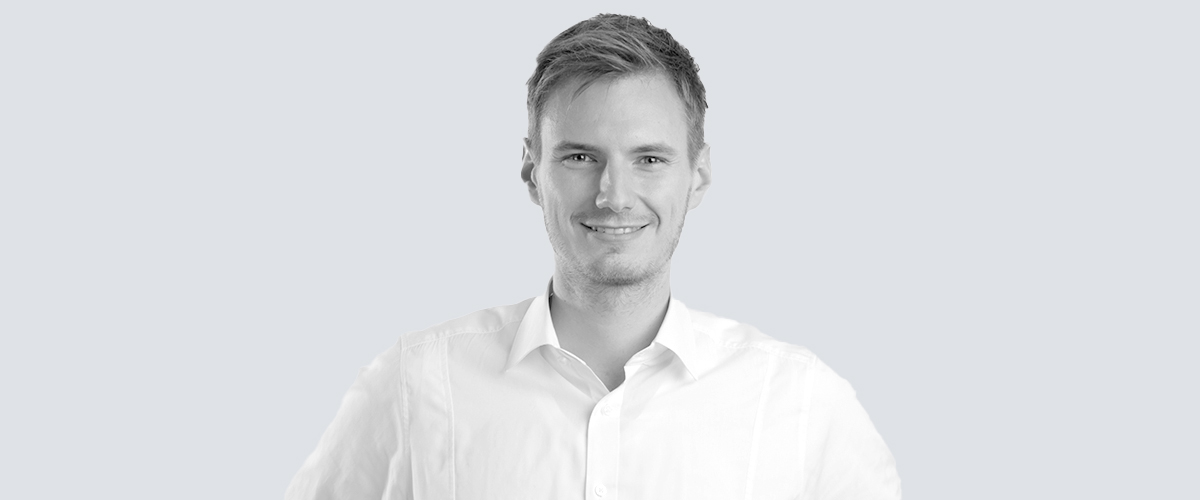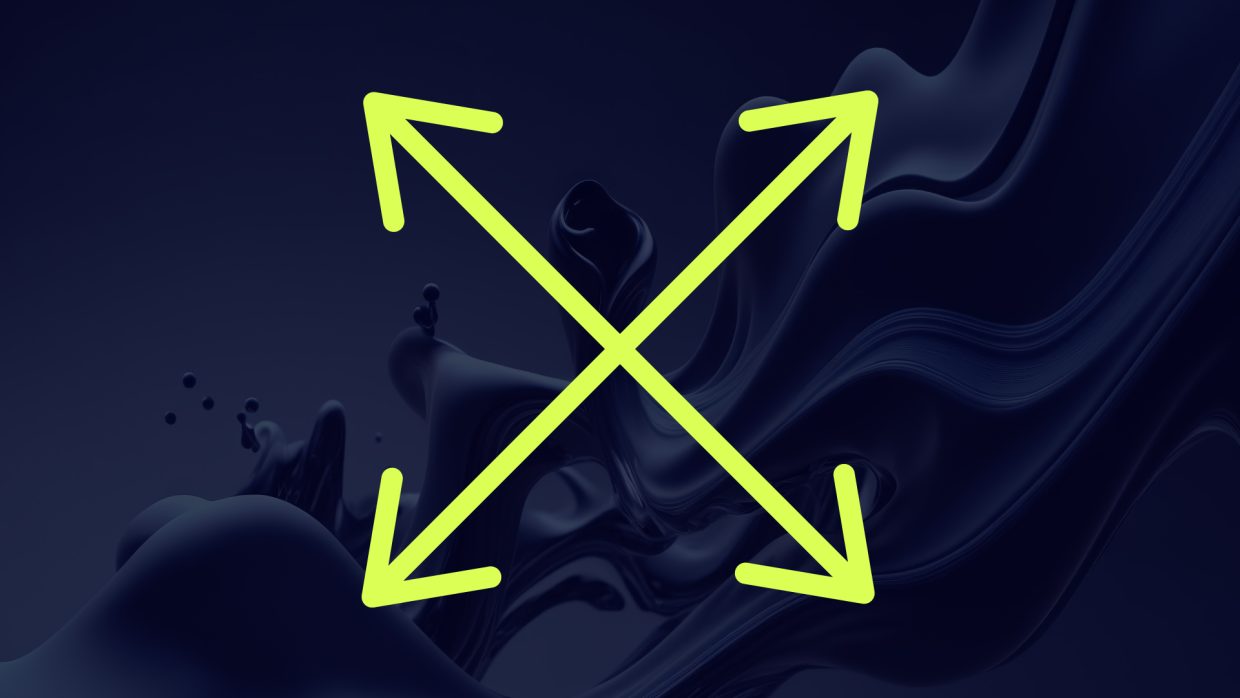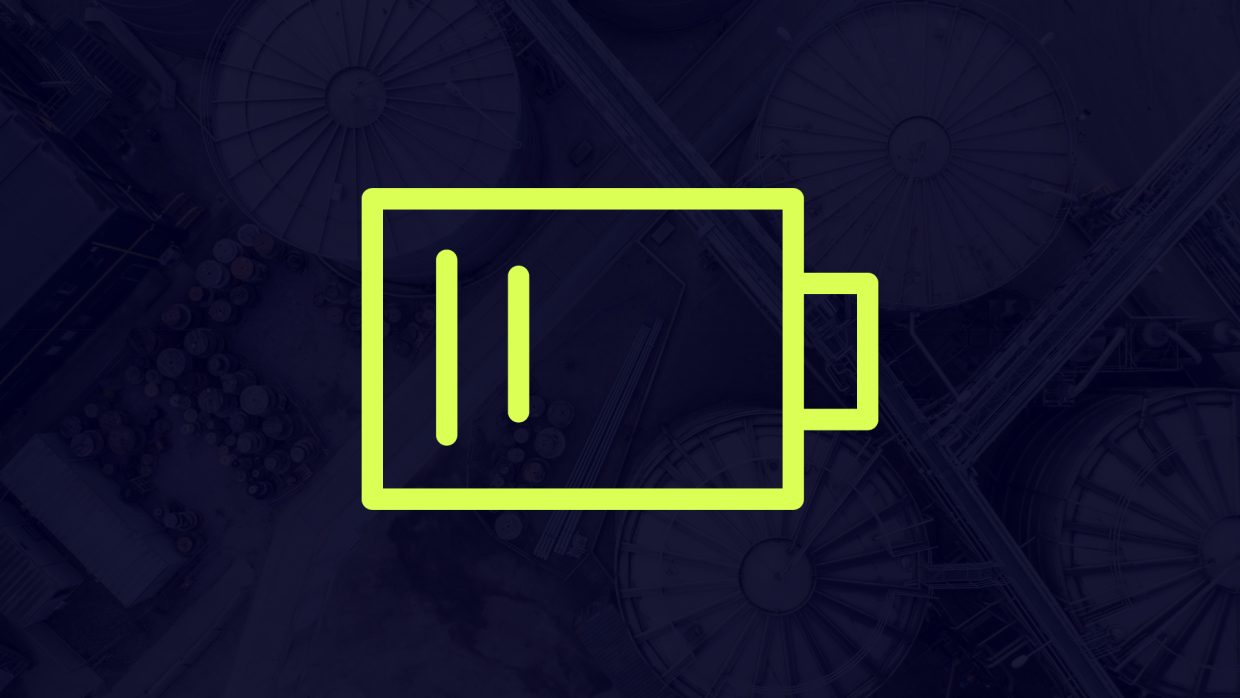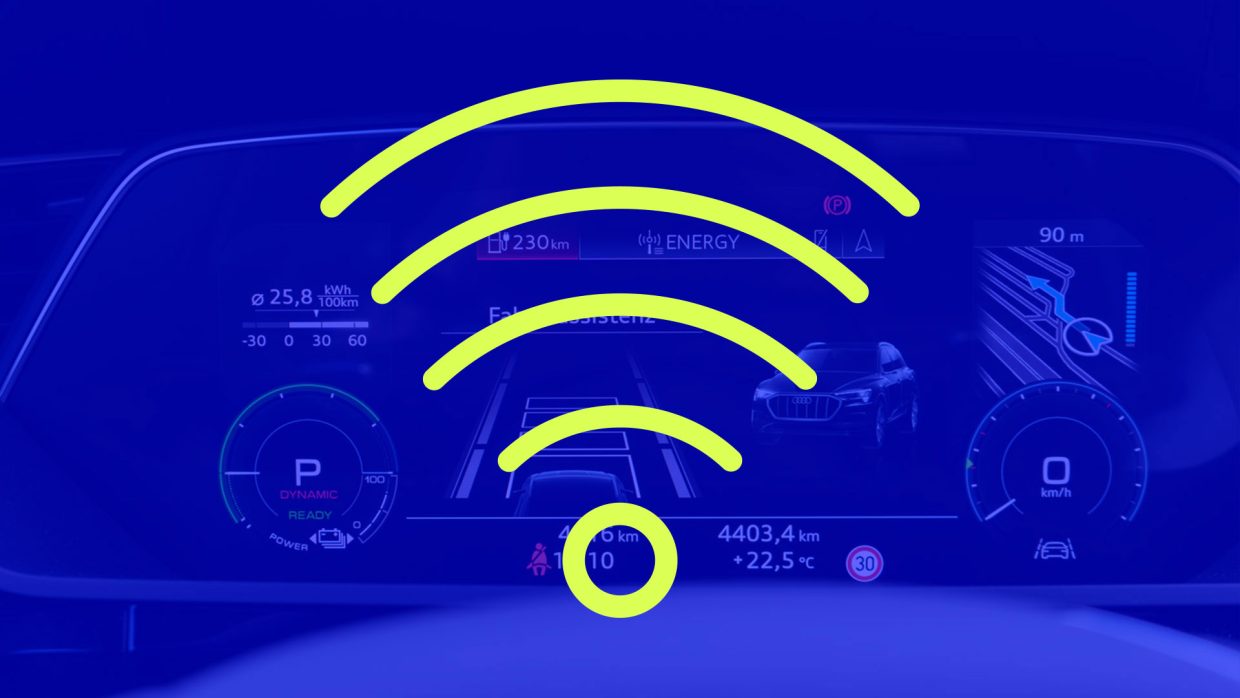Humanity has made tremendous progress in recent decades: we explored the space, developed breathtaking technologies, and created a global economy. However, our achievements also have downsides: our finite resources are dwindling, our environment is suffering, and we are facing the challenge of creating a more ecological and social economic system. A promising solution for this is the circular economy.
But wahat exactly is that?
In a linear economic system, natural resources are extracted, processed into products, and disposed of at the end of their useful life. The circular economy, on the other hand, supports the conservation of natural resources by closing the loop from resource extraction through production, use, and disposal. In this way, resources remain in the economy for as long as possible, and the finite resources of the earth are less burdened. Essentially, nothing gets thrown away. This can create ecological, social, and economic benefits throughout the entire lifecycle of a product. But how is the circular economy implemented in practice? What possibilities exist to extend material and product flows throughout the entire life cycle of the product or service? Will the circular economy soon become a necessity? What legal requirements and entrepreneurial incentives exist? This post will be the first in a series of deep dives on the subject economic circularity.
WHAT ARE THE MOTIVES FOR TRANSITIONING TO A CIRCULAR ECONOMY?
The rapid global population and consumption growth lead to an annual increase in resource consumption. For over 40 years, the world economy has been consuming more than the earth can regenerate. At the same time, only 7.2% of the materials used are in circulation – and this trend is declining. This is surprising, since circular economy provides a range of potentials for coping with resource scarcity. According to last year’s Circularity Gap Report, a consistent transition to a circular economy worldwide can save 39% of greenhouse gas emissions and reduce the use of primary raw materials by 28%. The positive effects on other impact categories such as water use, land use, acidification, ozone depletion, and ecotoxicity were not considered and must not be forgotten.
However, a functioning circular economy is not only an important building block on the way to climate neutrality and the achievement of the Paris climate goals. It also offers a variety of economic opportunities for companies. Future resource and material supply risks can be secured, and increasing price uncertainty and volatility can be reduced. Circular product design, which facilitates later remanufacturing, is more resource-efficient and cost-effective than producing an entirely new product. In addition, through new business models, companies can tap into additional revenue streams and markets and build new customer relationships. The transition from a linear to a circular economy is not only ecologically necessary but is expected by all economic stakeholders. In addition, a legal framework through policy and legislation at the EU and national levels with effective regulations and incentives is essential to ensure successful implementation.
WHAT DOES LEGISLATION ON THE CIRCULAR ECONOMY LOOK LIKE?
At the European level, the Circular Economy Action Plan sets out objectives and measures for the transition to a circular economy and will lead to new requirements as well as the revision of existing regulations. The End-of-life vehicle (ELV) Directive and the New Batteries Regulation, which, among other things, promote the use of recycled materials and tighten recycling requirements, are important for the automotive sector. The EU Taxonomy Regulation, as an instrument for environmentally sustainable investments, names the transition to a circular economy as one of six environmental objectives. While the first delegated regulation is already available and addresses the two environmental objectives of climate change and adaptation, the report to specify the remaining four environmental objectives, including the transition to a circular economy, has been delayed.
Additionally, some state-specific laws, supporting the transition to a circular economy, are already in place. The EU Waste Directive obligates member states to develop national waste prevention programs. In Germany, this is implemented as part of the Circular Economy Act, which focuses on waste prevention and environmentally compatible recycling. Other national laws, such as the revised German Packaging Act and the French AGEC, obligate gastronomic businesses to combat waste and promote circular economy, for example by offering their products in reusable packaging. More and more laws, norms, and regulations are demanding and promoting the introduction of a circular economy. If not all initiatives have yet been translated into concrete legislation, it is advisable for all companies to actively engage with future regulations.
WHAT TOOLS AND PROCESSES EXIST TO SUPPORT THE TRANSITION TO A CIRCULAR ECONOMY MODEL?
There is no magic formula for the introduction of a circular economy, however, a holistic view of product lifecycle is mandatory. A tailored approach must be developed for each product. The implementation of the circular economy is based on measures that follow the following strategy:
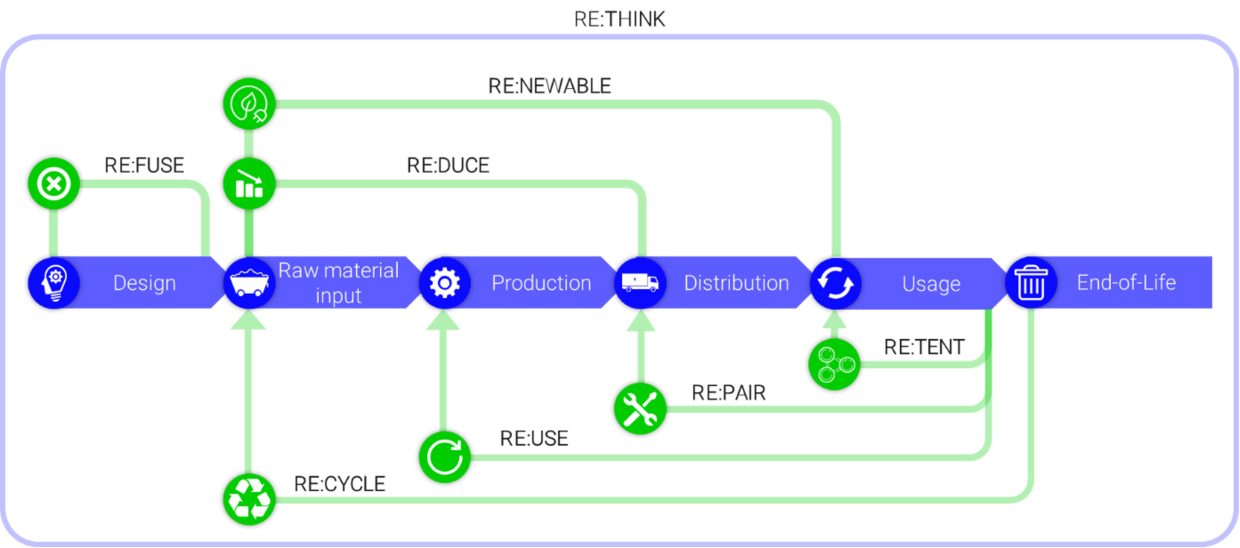
The minimization of the environmental impacts of the product must be considered throughout all phases of the product’s life cycle: raw material extraction, production, distribution, use, and end of life. With an environmental life cycle assessment (LCA), various indicators can be used to determine which phases of the reference product’s life cycle have the greatest environmental impact. The results provide insights for eco-design and enable companies to focus on the aspects that harm the environment the most. The individual measures of the circular economy are explained in more detail below.
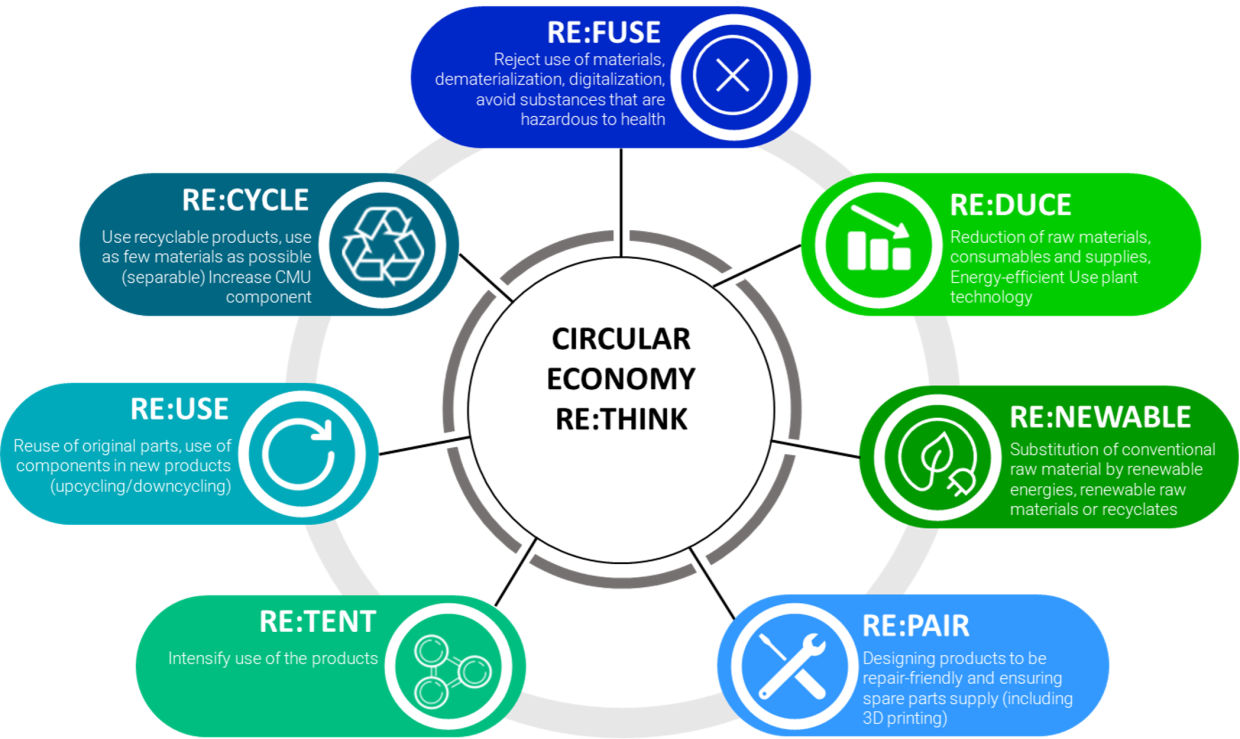
HOW DOES P3 SUPPORT THE TRANSITION TO A CIRCULAR ECONOMY?
P3 supports you in introducing a circular economy in your company with comprehensive guidance:
- We establish an understanding of the circular economy with its challenges and benefits
- We know the regulatory framework and provide an overview of current and future laws for your specific case
- We offer strategy development with concrete milestones and a coherent action plan based on a business case
- But we can not only provide strategy but also accompany you in the operational implementation – resilient supply chains, KPIs, LCAs, and PMOs are our expertise
- As a technology consultancy, we immerse ourselves in the product, get the most out of existing products, and support new development from a circular economy perspective
- Especially in electric mobility, we know the products and challenges as a leading technology consultancy like no other. Whether expertise in recycling processes, EV batteries, manufacturing processes, Battery Passport or Smart Charging, we are the right partner.
- Communication is our strength. Good actions can be confidently communicated to the outside world, but internal communication is also essential in order toto achieve the goals we have set out for ourselves together.
- We integrate the circular economy into your company and make your company fit for the challenges to come
P3 has been offering strategic and operational approaches as well as communication concepts for 20 years. From idea generation to successful implementation – P3 supports clients in every phase with a broad portfolio of services and self-developed as well as proven tools. Our goal is to provide our clients with tangible added value and help them succeed.
Together we can integrate circular economy into your business. Contact us any time for more information.
